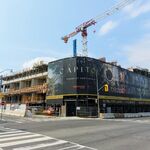Northern Light
Superstar
Northern, I think population growth might not be playing as major a part as it seems. We've had consistently strong population growth since WW2 (and before of course), but never this kind of dramatic price growth. To be sure, population growth is contributing to rising prices.
Certainly both are contributing; degree is very challenging to assign.
One clear issue over time is that household size is shrinking. That means the same number of people require greater numbers of homes than was previously the case.
That not only impacts on any additional population we bring in, but on the existing 38 million already.
Note, a simple drop of 0.1 people per household requires an increase in housing supply (if the population remains static) of 4%!
Lets translate that into units. At 12.4 Million existing households; a 4% increase requires an additional 496,000 housing units!
That is the exact change in household size from 2001 to 2006.
It appeared to level out a bit thereafter in 2011 but it dropped again in 2016 to 2.4; just found that here:
https://www12.statcan.gc.ca/census-recensement/2016/dp-pd/prof/details/page.cfm?Lang=E&Geo1=PR&Code1=01&Geo2=PR&Code2=01&SearchText=Canada&SearchType=Begins&SearchPR=01&B1=Families, households and marital status&TABID=1&type=0
This year's data will be interesting to see.
Suffice to say, based on the above, had population remained roughly constant, we would have required close to 1M to new housing units in the last 20 years.
Population growth over than same period was ~7M (22.5%); so if you assume 2.4 people per household; we would have required 2.9M housing unit completions for that growth in order to keep pace.
That puts the total requirement at about 4,000,000 units. That would have required a pace of 200,000 units per year for the last 20 years. (50,000 per quarter)
This is every quarter of completions since 2001:
I haven't done the math yet, but that certainly looks shy to me.
But I would argue that loose fiscal and monetary policy over the last 10 years has been a much bigger culprit.
Again, certainly a contributor, no doubt about it.
Very tough to weigh the exact contribution relative to other causes.
Attachments
Last edited:





/cloudfront-us-east-1.images.arcpublishing.com/tgam/FBMW26RV4BASDPFY4RAMF4LCRU.JPG)